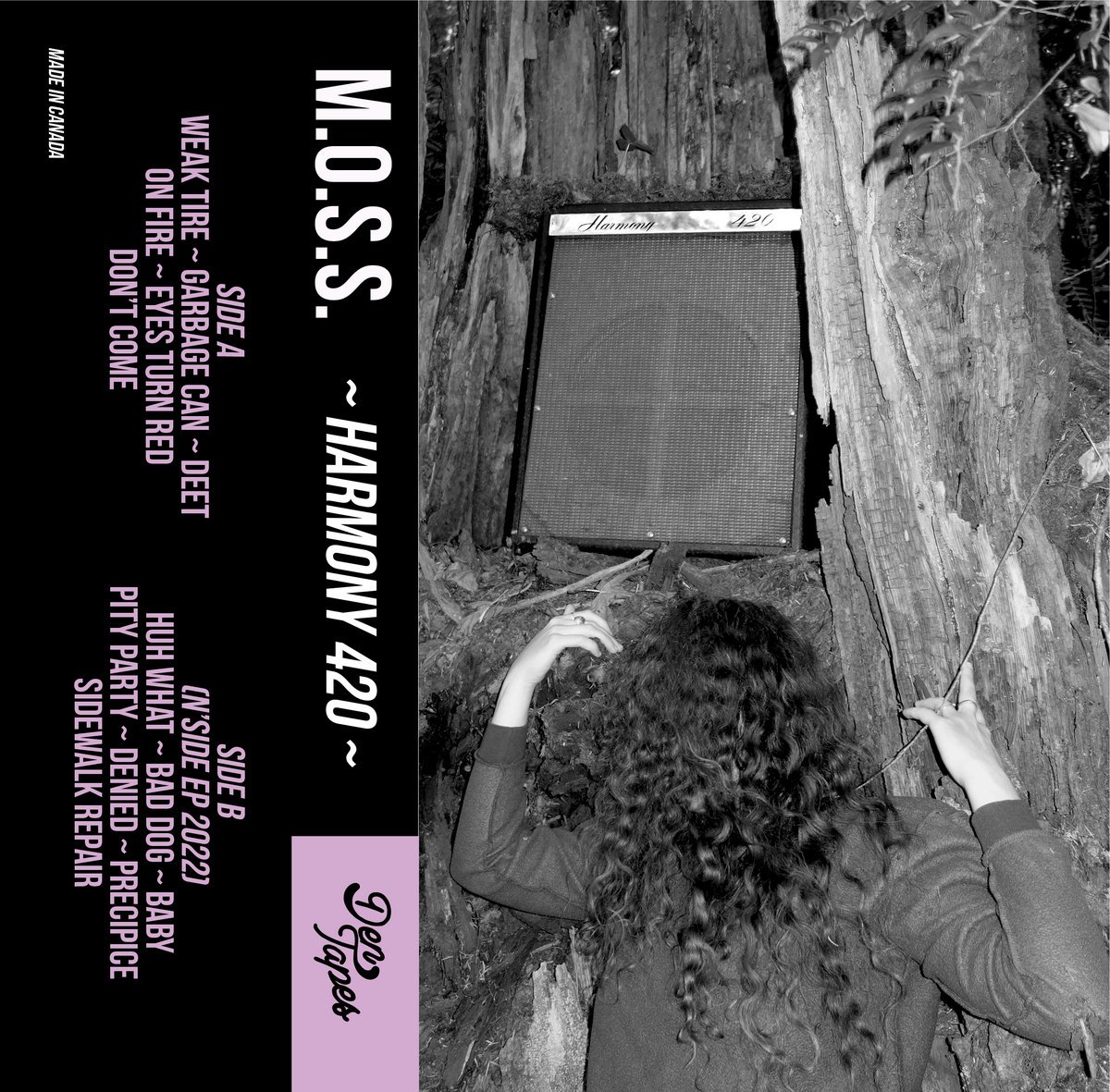REVIEW: M.O.S.S. Blow Out The Speakers on “Harmony 420”
Now that’s a title. Even just typing it up I was thinking damn I wish I’d a thought of it. It’s the name of a guitar amp from the ‘60s that’s noted for its sweet, warm tones, which makes it a double entrendre for the kind of music all over its eponymous EP: resigned haze with a tweed twang. It’s also quite loud, which is exactly what you want from an EP named after an amp.
Fittingly, Harmony 420 immediately blows out the speakers. The low end dominates on opener “Weak Tire,” where guitarist Ryan Mortenson enters with a voice that stretches one-syllable words into two. That voice, like Wednesday’s Karly Hartzman’s, is like an road that hasn’t been paved in a while — it weaves and rolls and cracks without much effort. Later, on the alt-country swing of “Garbage Can,” drummer Emma Mcgraw matches him with a voice that hits the low notes like beer flooding a growler.
Produced crunchy and recorded with an exquisite looseness, Harmony 420 is a captivating sensory experience. It’s sonically uniform but stylistically variegated, calling back to late-‘80s/early-‘90s American indie like Galaxie 500 on the basement-based lyserg-isms of highlight “Eyes Turn Red” or The Breeders on the call-and-response burn of “On Fire.” The lyrics are impressionistic but not pretentious, as Mortenson and Mcgraw sketch simple but affecting outlines of low self esteem (“My blood runs yellow/Like a dandelion/covered in DEET,” goes Mortenson on the rolling hard rock of “Deet”) that the band fleshes out fully. The guitars in particular are fantastic, all classic lead and rhythm interplay by Mortenson and Jack Swart. For a relatively new drummer, Mcgraw’s drums are plaintively great, and bassist Nathan Anderson-Hobbs shines in secret both when he’s supporting the band and when he diverges with his own melodies (listen to that movement in action on “On Fire”).
Harmony 420 is M.O.S.S.’s second EP this year; it, along with its debut N’SIDE EP, are both are included on a Den Tapes release from last month. The difference between them is striking - N’SIDE is heavier, gloomier, and doomier, but it’s also a significantly softer listen. Its sequel, meanwhile, presents a band not only willing to explore lighter territory but simply killing it wherever they land.

